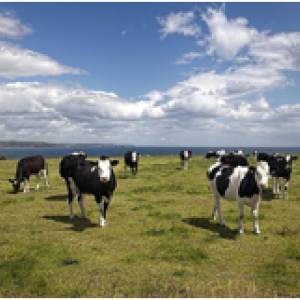
This very interesting paper essentially argues that policies designed to incentivise production efficiencies achieve greater GHG reductions than those focusing on consumption. Moreover they do so at lower calorie ‘cost’ than consumption side measures. The abstract is given below, but we’ve produced some further explanation of the paper’s approach and findings, together with some comments in Our summary and commentary (which you can also download as a PDF below) draws upon some very helpful insights from Professor Pete Smith at the University of Aberdeen and includes some useful commentary from Dr Marco Springmann at the University of Oxford – thanks to both.
Abstract
Livestock are responsible for 12% of anthropogenic greenhouse gas emissions. Sustainable intensification of livestock production systems might become a key climate mitigation technology. However, livestock production systems vary substantially, making the implementation of climate mitigation policies a formidable challenge. Here, we provide results from an economic model using a detailed and high-resolution representation of livestock production systems. We project that by 2030 autonomous transitions toward more efficient systems would decrease emissions by 736 million metric tons of carbon dioxide equivalent per year (MtCO2e⋅y−1), mainly through avoided emissions from the conversion of 162 Mha of natural land. A moderate mitigation policy targeting emissions from both the agricultural and land-use change sectors with a carbon price of US$10 per tCO2e could lead to an abatement of 3,223 MtCO2e⋅y−1. Livestock system transitions would contribute 21% of the total abatement, intra- and interregional relocation of livestock production another 40%, and all other mechanisms would add 39%. A comparable abatement of 3,068 MtCO2e⋅y−1 could be achieved also with a policy targeting only emissions from land-use change. Stringent climate policies might lead to reductions in food availability of up to 200 kcal per capita per day globally. We find that mitigation policies targeting emissions from land-use change are 5 to 10 times more efficient—measured in “total abatement calorie cost”—than policies targeting emissions from livestock only. Thus, fostering transitions toward more productive livestock production systems in combination with climate policies targeting the land-use change appears to be the most efficient lever to deliver desirable climate and food availability outcomes.
Citation
Havlík P, Valin H, Herrero M, Obersteiner M, Schmid E, Rufino MC, Mosnier A, Thornton P, Boettcher, H, Conant RT, Frank S, Fritz S, Fuss S, Kraxner, F, Notenbaert, A. (2014). Climate change mitigation through livestock system transitions, Proceedings of the National Academy of Sciences
The paper can be downloaded here alongside an appendix containing supporting information.
Read some more coverage here.
You can also read more about livestock in our research library here. Search our website on this topic using 'livestock production system' or 'livestock + mitigation'.












Post a new comment »